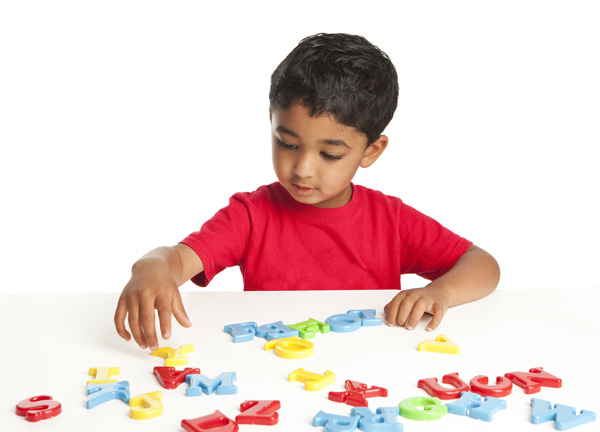Early care and education settings are important places where young children learn new words and build rich vocabularies that serve as the foundation for later school subjects such as reading and writing. This is especially true for young dual language learners (DLLs). When we think about classroom environments, we often think about the furniture, materials, learning centers, and schedule. Intentional, meaningful teacher and child conversations are also critically important for creating a language-rich environment. Teachers of young DLLs have the opportunity to create warm, supportive relationships with individual children that in turn encourages language development.
As children learn English as a second language, they may not feel competent to respond to conversations with native English speakers. Attentive teachers and caregivers understand this and accept nonverbal responses during conversations. When teachers and caregivers simply describe what children are doing, the children are exposed to and learn new vocabulary. Teachers and caregivers can converse with children during daily activities without pressuring children to verbally respond or provide a “correct” answer.
The following brief example illustrates how Kenisha, a child care provider, shows interest in Juri’s play activity. She describes what Juri is doing as he builds with blocks and small cars during choice time:
Juri is playing in the block center with various-sized blocks and small cars. Kenisha sits on the floor near Juri.
Kenisha: Juri, I see you built a garage for cars.
Juri smiles and keeps building the garage; he puts two small cars in the garage.
Kenisha: I see a red car inside the garage.
Juri: Car.
Kenisha: Yes, a car. Now I see two cars in the garage.
During this conversation Kenisha is teaching Juri new English vocabulary. She repeats words (“I see”; “car”) while commenting on his interest in building with blocks. She uses descriptive language to support his play. She understands that Juri is also developing new vocabulary in his heritage language as well as English. Unlike older children who have more established heritage language skills, DLLs are learning two languages at the same time.
Kenisha uses individual conversations to build a warm relationship with each child in her class. She accepts Juri’s smile and one-word response to her statements. Kenisha knows that using a conversational tone helps Juri respond in English without added anxiety that may occur when adults expect DLLs to answer complex questions.
Building a warm, responsive relationship with each young child that includes meaningful teacher/child conversations throughout the day contributes to the language-rich early care and education environment that DLLs need to confidently learn new words in English.

Bernie Laumann
Dr. Bernadette M. Laumann was the coordinator of the Illinois Early Learning Project from 2013 to 2019. She has been a child care teacher, an early childhood special education teacher, director of an inclusive early childhood program, researcher, and university teacher educator. Her research interests include mentoring and induction activities for beginning teachers and the use of technology in connecting evidence-based practice.
Biography current as of 2019


